
Animal
16:01, 10-Mar-2019
Make It Famous: The forgotten predator
By Zhao Ying, Xu Chenlu
00:45
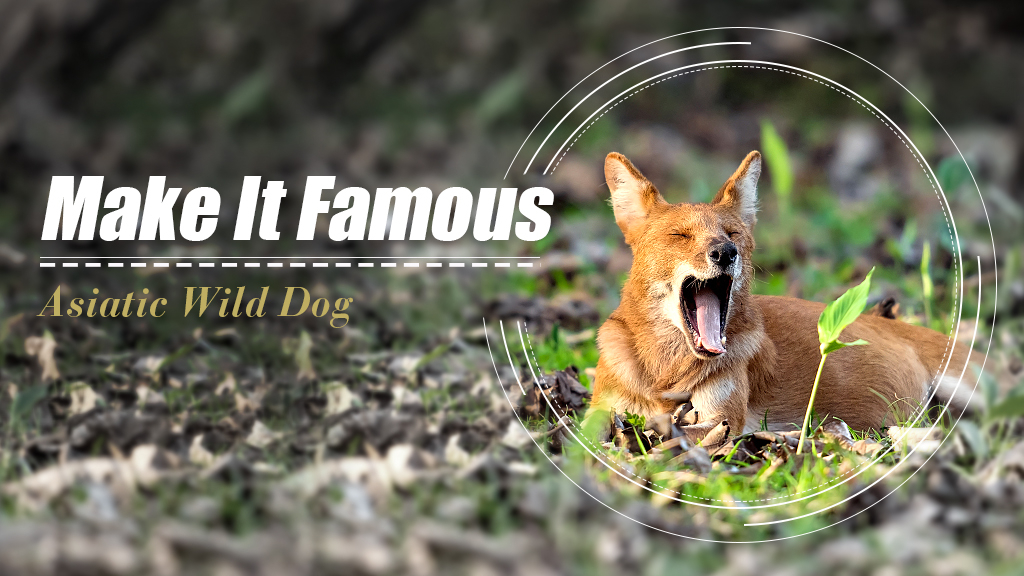
Talking about the canine dhole, people would think of words like vicious and cunning. In many Chinese idioms, it is used to represent mean and truculent people. In general, dhole has a poor reputation. The stereotype to some extent deters people from knowing more about the creature.
With rust-colored fur, the dhole is often mistaken as a wolf or dog. However, it is only 30 to 50 percent the size of a wolf. As an adept predator, it roams in forests and meadows of Central and East Asia, hence its name Asiatic wild dog. In China, the dhole is widely distributed in western provinces.
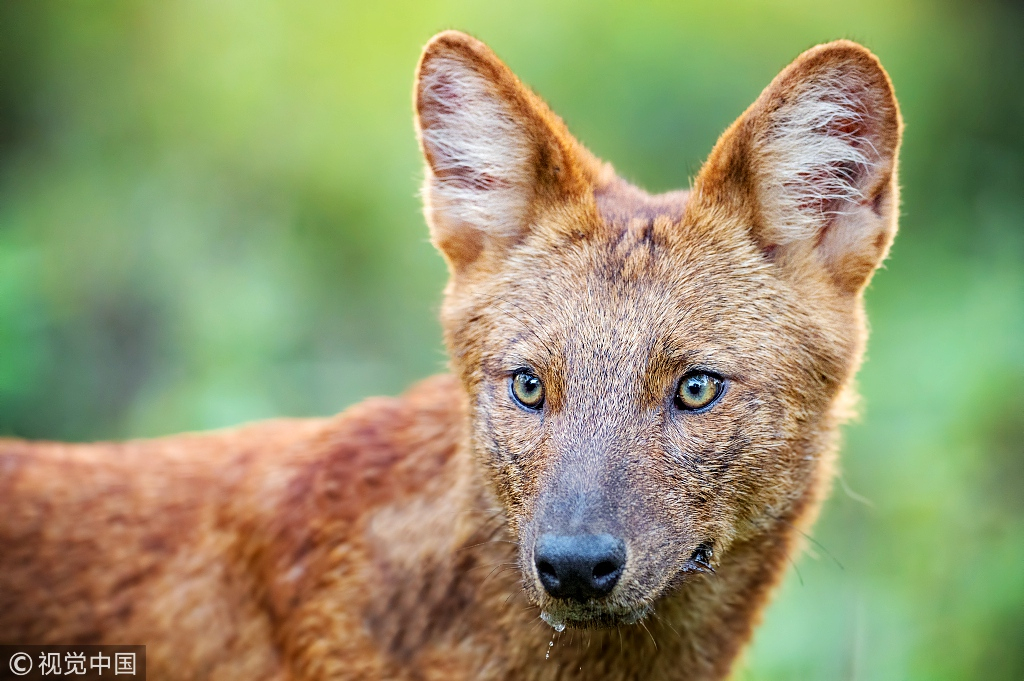
Closeup of a dhole. /VCG Photo
Closeup of a dhole. /VCG Photo
Dhole usually lives in a pack of around 10 members. Unlike the wolf, the dhole pack does not have a rigid dominance hierarchy but is more egalitarian and flexible. During hunting, they split into small groups and manifest a fabulous cooperation ability in bringing down their prey. They then would share meals together and the pups are allowed to eat before other pack members, which is not the case in a wolf pack.
Unfortunately, the dhole is poorly studied by scientists. Firstly, they are hard to find and observe. Besides, the dholes usually share the same habitat with tigers and leopards, and their diets are sometimes overlapped. Since scientists and conservationists give more attention to tigers and leopards, the dhole is largely neglected.
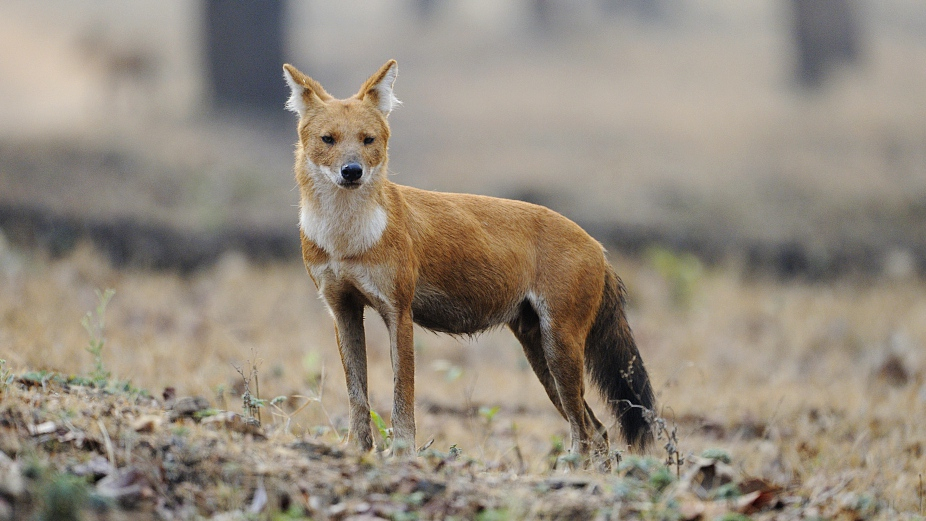
An alerted dhole. /VCG Photo
An alerted dhole. /VCG Photo
Currently, dhole is listed as endangered by IUCN Red List and under the second-class state protection in China. Their population is on a constant decline as they are threatened by depletion of prey base, habitat loss, and hunting.
Dholes in Asia have suffered from the decline of their prey. According to a researcher, 70 percent of dhole's diet consists of meat, mainly from ungulates. If dholes cannot get enough prey, they might hurt livestock which fuels the herders. As one of the top predators in the area, dholes are of ecological importance to the food chain all the way down.
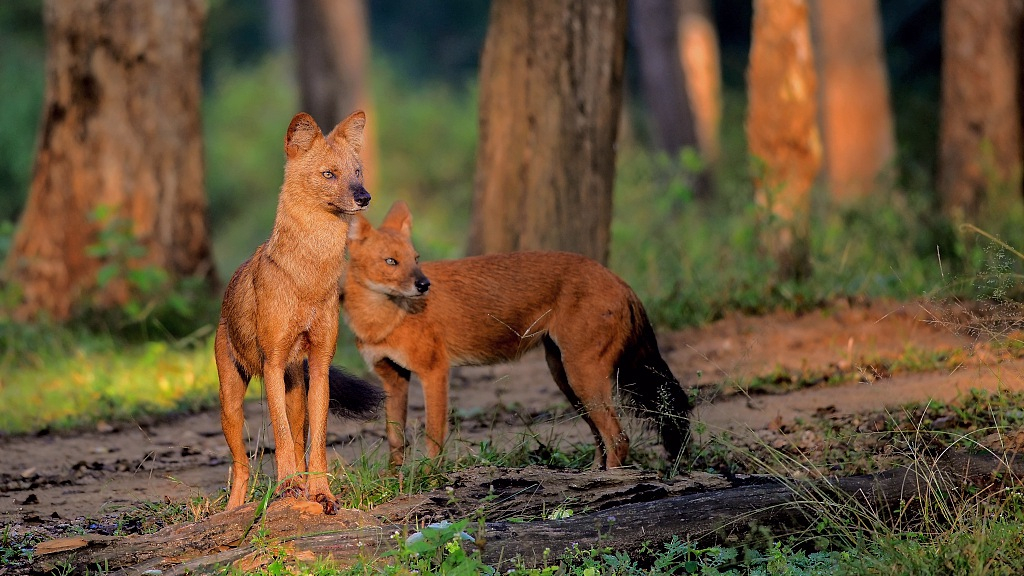
Bathing in the sunlight. /VCG Photo
Bathing in the sunlight. /VCG Photo
China has established several forest reserves where wild dholes can forage and shelter. Recently, a small pack of dholes has been captured by the infrared camera in reserves like the Heishui River Giant Panda Nature Reserve in southwest China's Sichuan Province and the Yanchiwan National Nature Reserve in northwest China's Gansu Province.
Since 2013, the Yanchiwan National Nature Reserve Administration has cooperated with universities including Beijing Forestry University, University of Oxford and University of Manchester to conduct research on dholes. They use infrared cameras to monitor the distribution of endangered animals like dholes in the reserve.
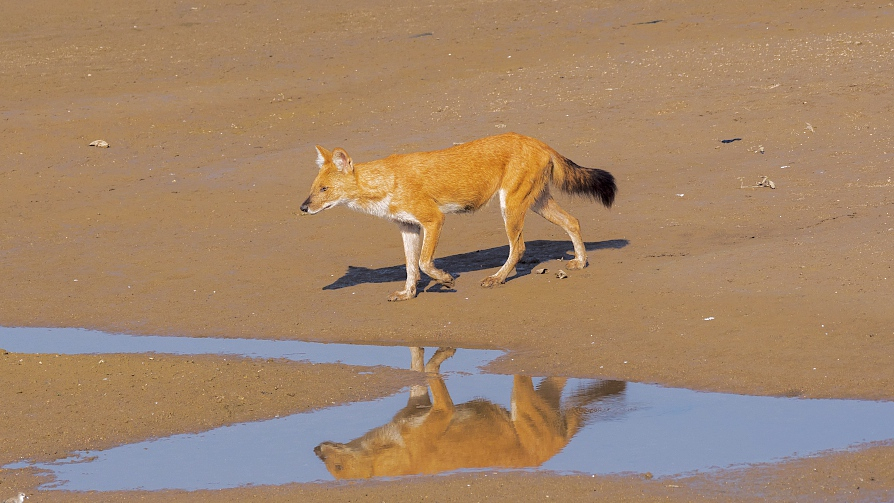
Strolling by the water. /VCG Photo
Strolling by the water. /VCG Photo
According to IUCN, the dhole has disappeared in 75% of its historically inhibited areas. It's very rare to spot a pack of ten dholes in China nowadays.
Make It Famous
During this year's Two Sessions, a CPPCC member proposed to update the List of Wild Animals under State Priority Conservation, which has been changed only once in 30 years. Although the country has made great achievements in protecting endangered species such as the giant panda, Tibetan antelope, and crested ibis in the last decades, human activities, resource utilization, and climate change are contributing to the destruction of the habitats of certain animals.
In this series, we will learn about some of the unfamiliar endangered animals living in China and how people and organizations in China are dedicated to protecting them.
(Cover image designed by CGTN's Liu Shaozhen)
(If you want to contribute and have specific expertise, please contact us at nature@cgtn.com.)

SITEMAP
Copyright © 2018 CGTN. Beijing ICP prepared NO.16065310-3
Copyright © 2018 CGTN. Beijing ICP prepared NO.16065310-3